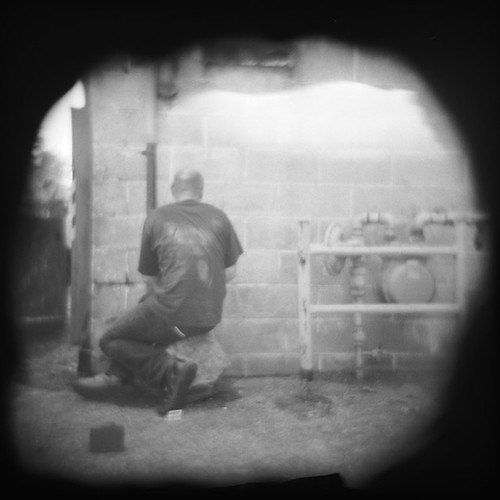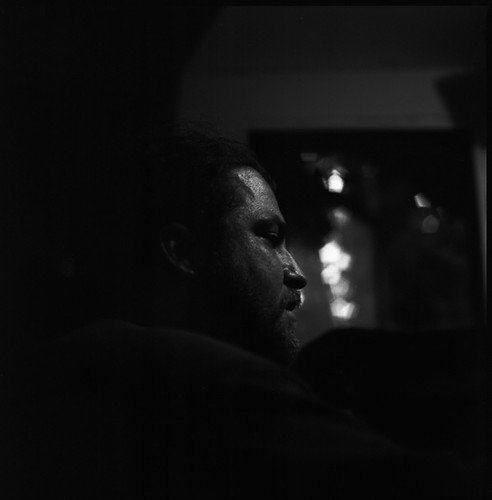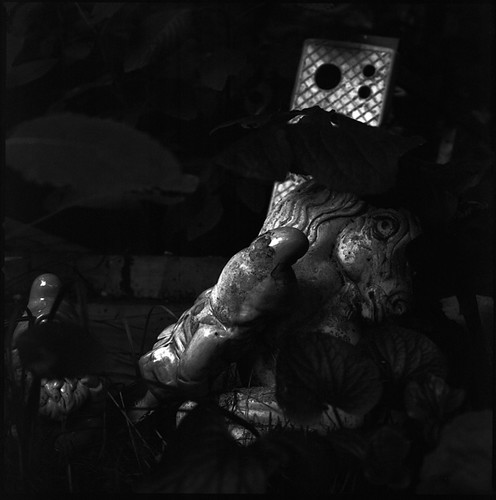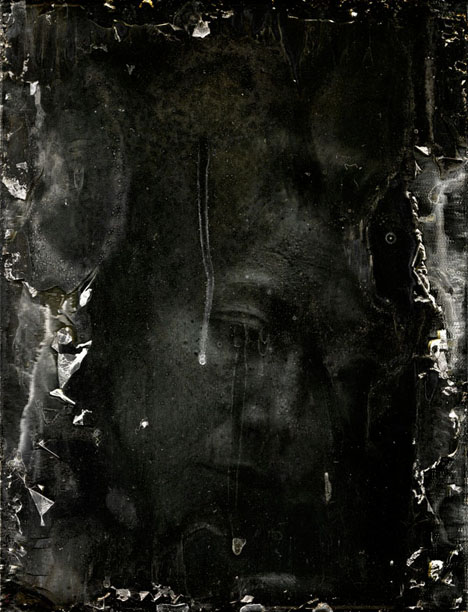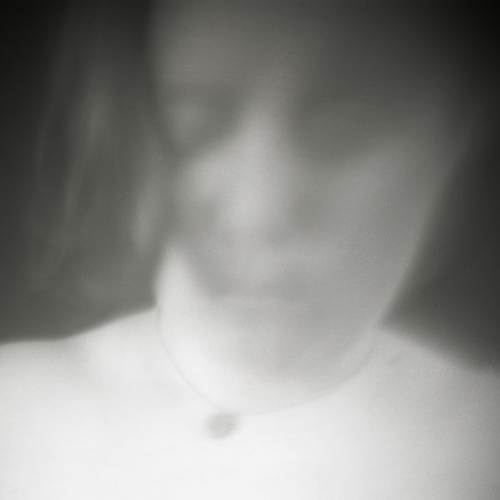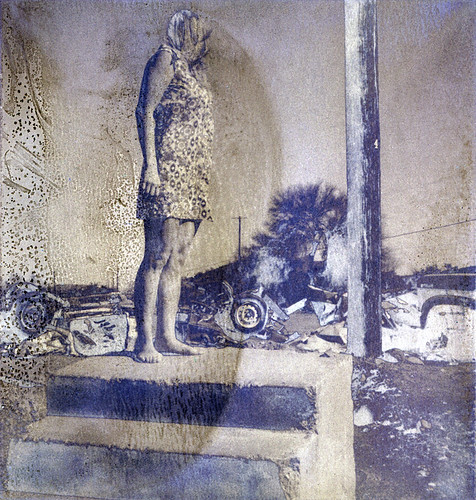Ever wonder what happens when you line a Holga with aluminum foil? Me too!
I crinkled the crap out of it to hopefully get lots of light bouncing around in different directions, and lined the camera, shiny side out. The irregular vignette is because I wasn’t very careful about leaving the edges of the light path clear.
I expected the lowered contrast, but was thinking I might get some random specular-type highlights. Nope. Of the whole roll, this is the only frame that had a visible artifact (the white wavy form near the top). But this does show that you can easily control the shape of your vignette, just take the back off and put some crap around the square hole you can see the shutter through.
If you care, this is Kodak T-Max 100 developed in Diafine.
